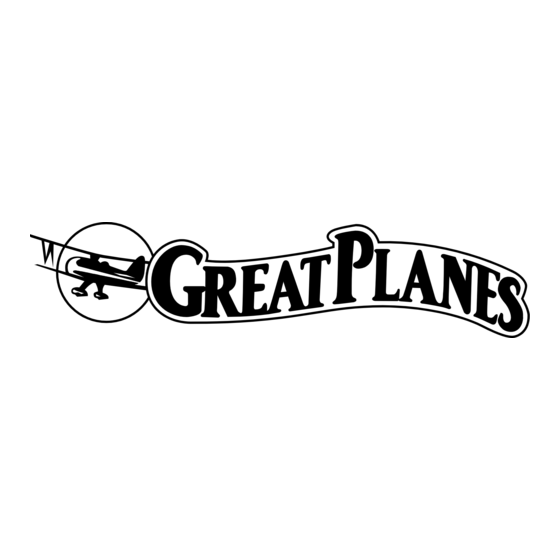GREAT PLANES Riot 3D Gebrauchsanweisung - Seite 13
Blättern Sie online oder laden Sie pdf Gebrauchsanweisung für Spielzeug GREAT PLANES Riot 3D herunter. GREAT PLANES Riot 3D 20 Seiten.

❏
3. Temporarily attach a 1" [25mm] main wheel to the
landing gear wire. Align a wheel pant as shown. Mark on the
wheel pant where the landing gear wire enters the pant. Drill
a 1/16" [1.6mm] hole in the wheel pant.
❏
4. Slide the wheel pant onto the landing gear wire along
with a wheel retainer (D6) as shown. Glue the wheel pant
and wheel retainer (D6) in place using medium CA.
❏
5. Attach a main wheel and center it in the wheel pant
opening. Use the included white plastic retainers to hold
the wheel in place. Secure the white plastic retainers with a
drop of medium CA. Be very careful NOT to glue the
wheel to the wire.
❏
6. Final gear installation will resemble the photo above.
ATTACH THE PROPELLER
❏
1. Connect the propeller to the motor as shown using the
rubber O-rings supplied with the motor. Be sure the screws
holding the O-rings are held in place with Threadlocker.
Propeller installation will resemble the inset photo
shown above.
APPLY THE DECALS
1. Use scissors or a sharp hobby knife to cut the decals from
the sheet.
2. Be certain the model is clean and free from oily
fingerprints and dust. Prepare a dishpan or small bucket with
a mixture of liquid dish soap and warm water–about one
teaspoon of soap per gallon of water. Submerse the decal in
the soap and water and peel off the paper backing. Note:
Even though the decals have a "sticky-back" and are not the
water transfer type, submersing them in soap & water allows
accurate positioning and reduces air bubbles underneath.
3. Position the decal on the model where desired. Holding the
decal down, use a paper towel to wipe most of the water away.
4. Use a piece of soft balsa or something similar to
squeegee remaining water from under the decal. Apply the
rest of the decals the same way.
GET THE MODEL READY TO FLY
Check the Control Directions
❏
1. Turn on the transmitter and receiver and center the
trims. If necessary, remove the servo arms from the servos
and reposition them so they are centered. Reinstall the
screws that hold on the servo arms.
❏
2. With the transmitter and receiver still on, check all the
control surfaces to see if they are centered. If necessary, adjust
the clevises on the pushrods to center the control surfaces.
13
